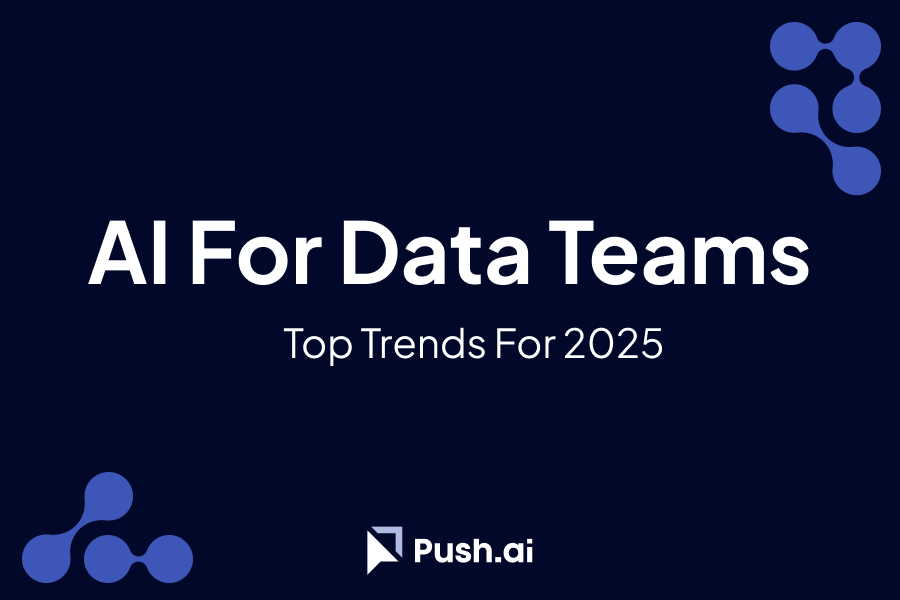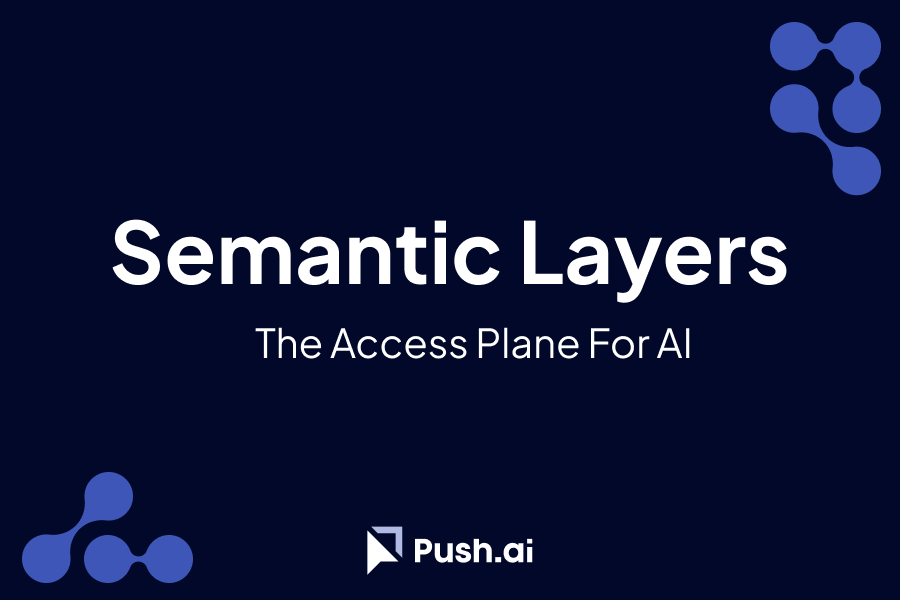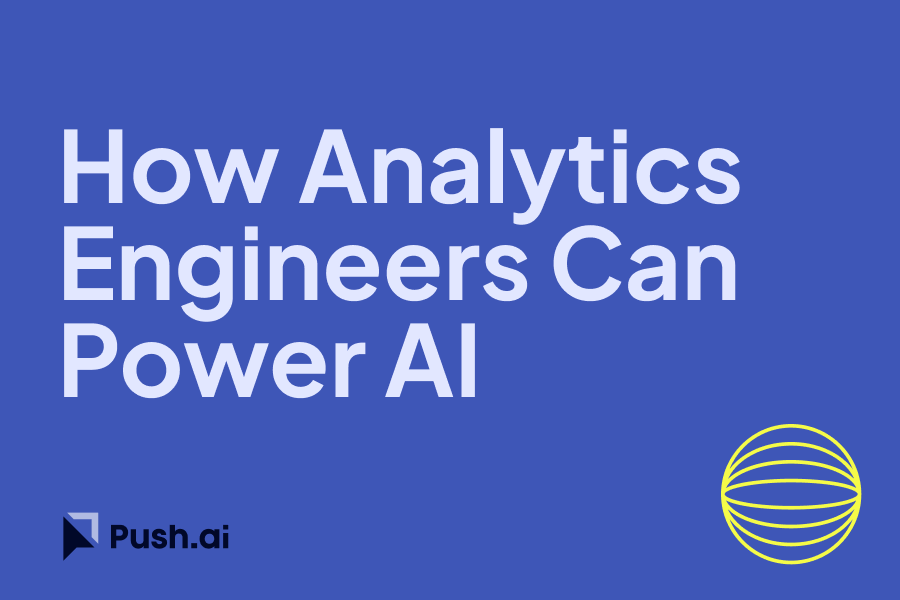AI-Powered Analytics Engineering
Generative AI is transforming how data teams build and manage pipelines. Analytics engineers now leverage AI assistants to write SQL, generate code, and even create tests, dramatically accelerating development. Teams using AI-powered tools report saving hundreds of hours and tens of thousands of dollars per year in productivity gains . For instance, AI can profile new data sources and suggest data models, helping engineers implement initial dbt models or ETL pipelines faster. At advanced adopters, AI pair-programming tools (like Cursor) enable scaling up the number of analytics models—one Fivetran engineer built a production-ready data connector via AI in under 30 minutes . By automating boilerplate and maintenance tasks, AI frees analytics engineers to focus on data quality and business logic, while increasing the pace of model delivery.
For additional reading:
Unlocking Unstructured Data in the Warehouse
Data teams are tapping AI to extract value from unstructured data—the ~80–90% of enterprise data that lives in text, documents, images, code, and more . Traditional BI mostly ignored this trove, but large language models (LLMs) and new tooling are changing that. Generative AI excels at parsing and summarizing unstructured information, effectively acting as “search engines on steroids” over text and files . Modern cloud warehouses are becoming AI-native: for example, Snowflake now offers built-in LLM functions and vector search, so analysts can query documents or chat with data directly from SQL . Similarly, BigQuery and others integrate with AI services to analyze text or images alongside tables. This convergence of AI and warehousing unlocks new data sources (like PDFs, emails, logs) for analysis and makes the warehouse a one-stop shop for structured and unstructured data. The result is richer analytics – imagine profiling sentiment in customer reviews or extracting entities from contracts – all within your data platform.
For additional reading:
AI Agents and Automated Data Workflows
The next evolution of data ops is AI agents: autonomous software assistants that act on data insights. Instead of just producing reports, AI agents can trigger workflows and integrate with business systems in real-time. This is akin to reverse ETL 2.0 – but rather than manually piping data to applications, an intelligent agent can decide when and how to act on analytics. Companies like Google envision an “agentic” shift, where specialized AI agents collaborate with humans to interpret data and take action at unprecedented speed . For example, an AI agent might continuously gather marketing and sales data, analyze performance against targets, then autonomously recommend optimizations or launch a campaign workflow . Early adopters using tools like n8n’s AI integrations are already building such agents that interface with hundreds of apps (Slack, CRMs, etc.) to automate decisions. By automating data-to-action loops, AI agents promise to streamline processes and augment data teams – handling routine analyses, initiating alerts or updates, and allowing human experts to focus on strategy. This trend could fundamentally connect data to the rest of the organization by turning insights directly into actions with minimal human intervention.
For additional reading:
Knowledge Graphs and Enterprise Knowledge Bases
To fully leverage AI, many organizations are investing in knowledge graphs – semantic networks that link all their data (entities, events, concepts) into a coherent graph. Unlike traditional warehouses, graph databases excel at representing relationships and context. For data teams, knowledge graphs provide a foundation for enterprise knowledge bases, capturing institutional knowledge that AI can easily traverse. By ingesting scattered data and metadata into a graph, teams create a connected map of their business – customers linked to orders, products to support tickets, employees to skills, etc. . This pays off when using AI: LLMs augmented with a knowledge graph can retrieve facts with precision and ground their answers in true company-specific information, rather than relying on general training data . Early use cases show that knowledge graphs boost the factual accuracy and trustworthiness of generative AI outputs . Building and maintaining these graphs becomes a new responsibility for data engineers, involving tasks like entity extraction from text, ontology management, and graph queries. The benefit is an AI-ready knowledge layer: when a business user asks an AI a question, the AI can “think” through the knowledge graph to give a well-informed answer. In 2025 and beyond, we expect knowledge bases and graph analytics to become mainstream in data stacks, enriching BI with connected context and enabling smarter AI-driven applications.
For additional reading:
Semantic Layer as the Bridge to Trusted AI
As organizations let AI tools directly interface with their data, ensuring consistent, correct answers is paramount. This is where the semantic layer comes in – effectively an access plane for the data warehouse that defines metrics, dimensions, and governance rules in business-friendly terms. A semantic layer sits between raw data and the AI or BI consumer, unifying data with a consistent, context-aware model that both humans and machines can understand . This means that when an executive asks a question in natural language, the AI is interpreting it against one official definition of “Revenue” or “Active Users,” linked to the approved calculations and sources. The semantic layer provides clean metadata, defined relationships, and business logic (KPIs, hierarchies) in one place . The payoff is twofold: accuracy and trust. LLMs, which otherwise have no inherent knowledge of your company’s data definitions, can draw on the semantic layer to deliver consistent, error-free analysis . Meanwhile, governance is enforced – role-based access, data masking, and other policies are baked into the layer, so even an AI agent only sees what it’s permitted to see . In short, the semantic layer is becoming the guardrail that makes self-service AI feasible for analytics. It enables conversational BI tools to reliably turn fuzzy questions into valid SQL, and explains how each result was derived (critical for compliance and user confidence). Platforms like Push.ai embrace this approach by combining a governed semantic layer with AI and BI capabilities, allowing teams to harness AI-generated insights they can trust. Scan the QR code on this handout to read the full guide, “AI for Data Teams (2025),” which explores these trends in depth with practical examples and tips for implementation.
For additional reading: The Governed Access Plane for AI


%201.svg)







